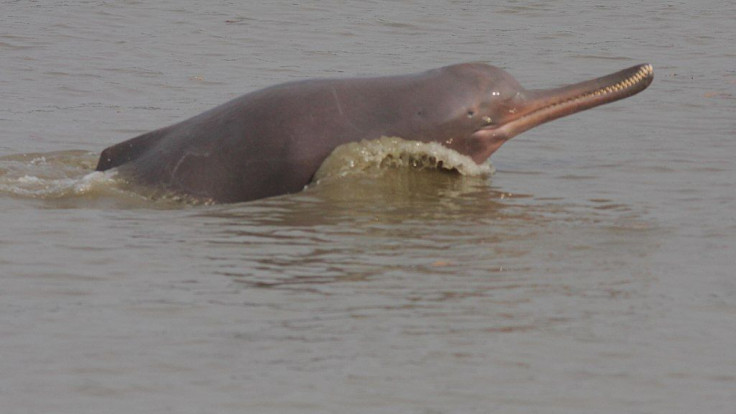Carcass Of Endangered Dolphin In Bangladesh Sparks Poaching Fears
KEY POINTS
- The carcass of a Ganges river dolphin was spotted by locals in Bangladesh
- It had a sharp incision and its body fat had been removed
- It is the second dolphin found dead in the sanctuary amid the coronavirus lockdown
On Sunday, authorities reported the discovery of the remains of an endangered river dolphin in a river sanctuary in Bangladesh. The find sparks fears of poaching amid the coronavirus lockdown.
The dolphin's remains were found on the bank of Halda River by locals from the town of Raojan, the local fishery department's Abdullah al Mamun told AFP. The creature had a sharp incision from its neck to its tail, and layers of its body fat had been removed.
Typically, the dolphins' layers of fat as well as their oil are sold to be used in traditional medicine, as many locals believe it can cure various diseases. In Bangladesh, however, it is illegal to kill Ganges river dolphins.
According to AFP, a local official who chose to stay anonymous reported locals have started to illegally fish since the usual authorities patrolling the region are busy enforcing the coronavirus lockdown. The nets trap the dolphins as well, making them easy targets for poachers who sell their fat and oil for high prices.
In fact, according to the outlet, Manzoorul Kibria of the Halda River Research Laboratory (HRRL) said this is the already the second dolphin to be found dead in the sanctuary since Bangladesh imposed the coronavirus-related lockdown.
Authorities are concerned about the possibility that more Ganges river dolphins could be killed.

According to the International Union for Conservation of Nature and Natural Resources' latest assessment, Ganges river dolphins are considered endangered. This means they have a high risk of going extinct in the wild in the immediate future.
In fact, according to the World Wildlife Fund (WWF), when the Ganges river dolphins were first officially discovered in 1801, they lived in the Ganges-Brahmaputra-Meghna and Karnaphuli-Sangu river systems in India, Bangladesh and Nepal. Now, however, they are already considered extinct in most of their original distribution ranges.
Because they live in one of the most densely populated places on Earth, they often die when they are caught as bycatch and when they are directly hunted for their meat and oil for medicinal use.
Apart from fishing, threats to the creatures include modifications of their habitat for dams and water management, which makes them susceptible to inbreeding and stops them from traveling long distances. Pollution from urban, industrial, military, agricultural and forestry waste also harms both the dolphins, which are the top predators in their habitat, as well as their prey.
Ganges river dolphin populations are now down to just 1,200 to 1,800 creatures, according to the WWF.
© Copyright IBTimes 2024. All rights reserved.






















